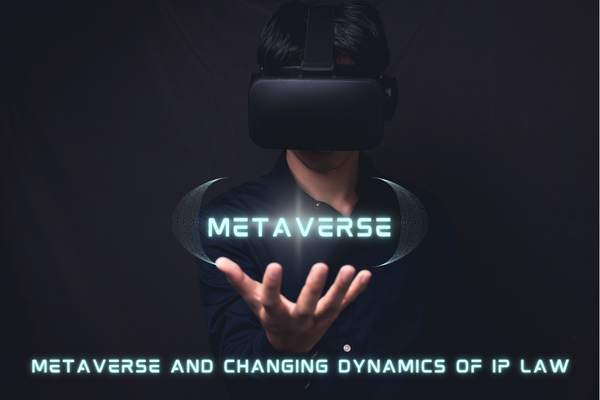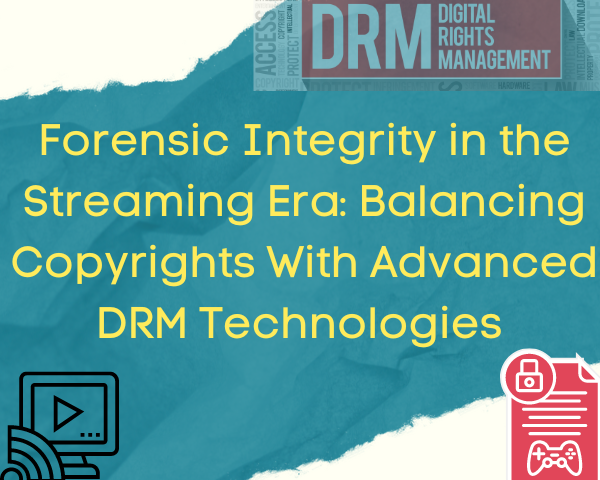The Intellectual Property (IP) rights jurisprudence over the years has adapted to the changing technological environment. Initially, there was a focus on the actual existence of creations and inventions, as it is a commonly known fact that ideas aren’t protected under IP law. However, as we ride on the everchanging wave of evolving technology, there also arises a need to reevaluate how laws, which traditionally operated in a different space, react to these new dynamics. IP laws have been one of the more malleable concepts due to their progressiveness and diverse applicability, furthered by the fact that we can still consider IP to be a developing facet of law.
Moving Towards The Metaverse
Businesses inadvertently move towards spaces which have the potential for more money to be tapped. One such growing space that is considered a hotbed for businesses is the metaverse. Taking the term literally, ‘Meta’ means beyond or higher, making the term ‘metaverse’ denote something which is beyond the universe.
The world till now was seen in a two-pronged way, one being a reality or the real world and the other being cyberspace or the digital world. The metaverse lies somewhere in the middle of this spectrum with the ability to permeate borders between these two environments. The visual technology and design capabilities are developing at a rapid pace where the metaverse will allow users to interact with virtual objects in real life with real-time information.
The metaverse is regarded as the “quasi-successor state to the mobile internet” as it isn’t a replacement for the internet. Instead, it is going to be transformative, building upon what already exists in the digital space. In an article, Matthew Ball succinctly and simply describes this new reality where the metaverse will place everyone within “an ‘embodied’, or ‘virtual’ or ‘3D’ version of the internet and on a nearly unending basis.”
The fundamental structure of the metaverse remains similar to the internet. The internet connects a variety of websites that can be accessed using a single browser, mirroring this, the metaverse too is a combination of several platforms. It includes many levels and components ranging from e-commerce, entertainment, and education to purchasing real estate, working, creating and viewing art, playing games, shopping, trading, attending concerts, trade exhibitions etc. The possibilities are endless, and each day brings forth a new dimension which is entirely unexplored.
WEB3.0 – Decentralized
Similar to the real world, the metaverse is not built or operated by a single entity, there are many stakeholders which include individuals, companies, governments etc. The conventional internet and social media, as we know it, is referred to as Web 2.0 while the metaverse belongs to a more recent category or iteration of the internet known as Web 3.0. The primary distinction between the two is that while Web 2.0 has a certain level of regulation and control imposed by the governments depending upon the jurisdiction, Web 3.0 is more decentralised, which means that no one entity is in charge.
The development of the Metaverse involves input from autonomous actors all over the world. For example, Decentraland is a trustworthy Web 3.0 platform amalgamating a game, a marketing channel, and thereby creating an ecosystem of its own. This is a 3 dimensional, user-owned, Ethereum-based virtual reality world platform which combines Virtual Reality (VR), Augmented Reality (AR) and the internet. This platform is run by a Decentralized Autonomous Organization (DAO) and is an experiment in developing a digital and decentralised environment. Some of the biggest celebrities and brands in the world have found their space in it, including Morgan Stanley, Coca-Cola, Adidas, Samsung, and Snoop Dogg. At its nascent stage, the metaverse saw many key players from the video game industry at the forefront of its technological developments. Video games also gave a glimpse of what the metaverse was likely going to be like with the help of immersive gaming experiences.
Metaverse And Its IP Needs
The foregoing discussion gives us an understanding of the diverse opportunities available in the metaverse. It is the new space to create, invent and develop ideas into expressions. With businesses moving more and more towards it, it is impossible for IP laws not to interact with the metaverse. Content-based industries such as music, advertising, movies, gaming, luxury, clothing, etc., have been heavily disrupted and changed with the advent of the metaverse.
Traditional concepts of IP jurisprudence which have metamorphosised on the metaverse are:
• Fixation and Originality in terms of copyright protection
– What qualifies the threshold of fixation and substantial similarity?
– Principles of Idea-Expression Dichotomy and digital art.
– Audio-Visual Elements?
– How do we assess originality in the metaverse and what is the comparative classification of the content generated thereon?
• Protection of IP rights
– How do we protect content/work generated in the metaverse?
– Who is the author, owner and proprietor?
– User-generated content and its impact on authorship?
– Content licensing with aspects of traditional territories, usage tracking, license fee structures, grant of rights, infringement etc.
– First to own v. first to use doctrine and its applicability to a transborder platform.
• Impact of patents and their expanding use in the metaverse
– Issues for software inventions.
– Who is an inventor?
– Artificial intelligence and its impact.
• Liability Issues and Regulatory Issues
– Where does the liability come in with user-generated content or AI-created content?
– How to inculcate a regulatory framework in a decentralised space with no single entity being in charge?
– Data protection and privacy issues.
– Jurisdictional issues.
The expansive content creation opportunities in the metaverse have also produced diverse legal questions with a plethora of literature maturing each day. A broader analysis indicates that quite a lot is yet to be answered. Taking the examples of the following, the importance of IP in the metaverse is only going to become more significant with each passing day:
IP Rights
IP is necessary for the metaverse to serve the same purpose for which it was traditionally developed – to protect and to encourage innovation/creativity. Counterfeiting, illegal distribution, infringement etc., are all prevalent in the metaverse as well. Copyrights, trademarks, patents, and trade secrets along with cross-licensing, advertising and royalties are just a few of the legalities that must be carefully managed as IP enters the metaverse. These must further be accompanied by contracts to ensure that one’s intellectual asset is not infringed upon by another.
For example, several well-known brand names, such as Gucci and Wanna (an interactive VR company), have also moved their brand identity onto the metaverse. Gucci and Wanna’s collaboration resulted in the innovative exploitation of digital fashion products. Rather than simply selling a genuine pair of digital sneakers using NFTs, Gucci sold the right to wear digital sneakers that can only be worn in digital environments under a licence arrangement.
Moving on to the metaverse, footwear giants Nike and Converse had filed a number of applications with the USPTO for their virtual offerings and many fashion, cosmetics, sports and entertainment players have also followed suit. According to WIPO, companies are focusing on the following classes of goods, i.e. downloadable virtual goods, namely computer programs (class 9), retail store services featuring virtual goods (class 35), entertainment services (class 41), online non-downloadable virtual goods and NFTs (class 42), and financial services, including digital tokens (class 36).
Drawing from the cases concerning copyright protection in video games, we may be able to predict the possible arguments that may crop up regarding the question of copyright protection in the metaverse. The court in Stern Electronics, 669 F.2d 852, held that the repetitive display of the identical sequence of multiple sights and noises in each play of the game rejects the argument of lacking fixation. In Atari, Inc. v. Amusement World, Inc., 547 F. Supp. 222 (D. Md. 1981), the court found the fixation requirement satisfied by the game’s printed circuit board because the ‘work,’ the audio-visual presentation, could be communicated from the printed circuit board with the aid of the video game’s display screen. However, this cannot have a blanket application to the metaverse due to both AR and VR components. However, the Courts have indicated an inclination towards taking a broader interpretation for fixation. Similarly, as mentioned above, copyright brings a lot of questions pertaining to authorship, licensing, infringement, liability, etc.
Conclusion
The metaverse has never been a simple space to understand; however, over a period it has evolved into a highly sophisticated platform with multimedia, commerce, inventions and works of art that incorporate a variety of elements and computer code as its technical foundation. With traditional IP jurisprudence evolving and maturing vis-à-vis the metaverse, interoperability and its impact will change the way IP laws are perceived.
This article aimed to provide a general understanding of the interaction between IP and the metaverse. The articles following this will aim to analyse specific IP concepts such as copyrights, trademarks and patents individually interacting with the metaverse.




